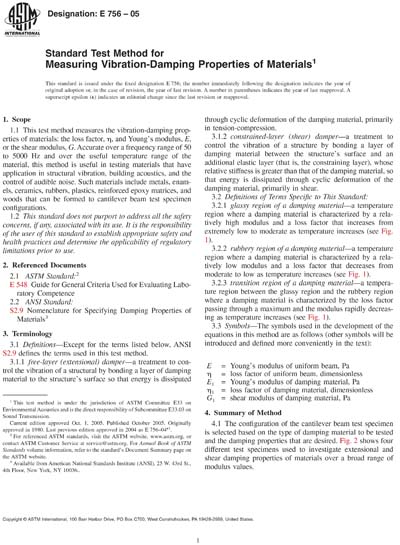Historical
ASTM E756-05
Standard Test Method for Measuring Vibration-Damping Properties of Materials
1.1 This test method measures the vibration-damping properties of materials: the loss factor, η, and Young's modulus, E, or the shear modulus, G. Accurate over a frequency range of 50 to 5000 Hz and over the useful temperature range of the material, this method is useful in testing materials that have application in structural vibration, building acoustics, and the control of audible noise. Such materials include metals, enamels, ceramics, rubbers, plastics, reinforced epoxy matrices, and woods that can be formed to cantilever beam test specimen configurations.
1.2 This standard does not purport to address all the safety concerns, if any, associated with its use. It is the responsibility of the user of this standard to establish appropriate safety and health practices and determine the applicability of regulatory limitations prior to use.
Content Provider
ASTM International [astm]






